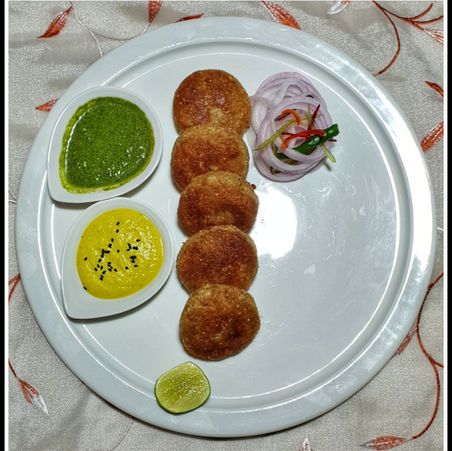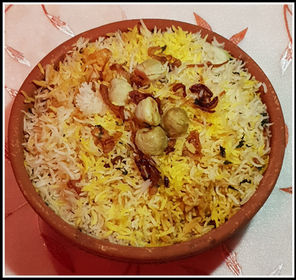
LOST CUISINES OF INDIA
by chef aungshuman
bidri, marriott
India in-spite of being culture rich country with rich heritage and history, has indeed its own share of lost cuisines and recipes due to various factors along various eras. If current food scenes enriched by traditional and soulful cuisines curated by talented Chefs across India is any testimony for what was eras ago, then I would be dumb-struck to know we have only scraped the iceberg of the history. Such is the vastness of culinary knowledge and expertise engulfed into the land of spices.
In one earnest attempt to curate and bring in the lost recipes from Mughal Era to British Era to post Independence times, Chef Aungshuman from Marriott Hotel & Convention center, Hyderabad is attempting to bring in some long lost dishes to limelight with not just flavors but story behind each one of them. Bidri @ Marriott is hosting "THE LOST CUISINES OF INDIA" starting 20th July till Aug 5th (dinners only) to recreate the rich historic recipes and celebrate our history on culinary expertise. Honored to have been invited to preview the same, I should say my experience and the culinary knowledge it has deepened within self has elevated the respect for our cuisines and the richness in heritage to whole another level. If you are one who loves exploring food beyond flavors and savoring them but use them as opportunity to learn above and beyond food, this one is not to miss out !!!
As we sat down to start our meal, Chef came into to give a glimpse and overview of the dinner menu and how it was curated to have around 45 dishes in the whole out of which we will be tasting around 20 dishes and looking at the menu, we knew we were in for a culinary extravaganza. What I also loved about Marriott was the menu was curated to be also informational that each dish had a short description of its history and ingredients which made our dinner sorted out.
"Let food be thy medicine and medicine be thy food" - rightly put by Hippocrates
We started off with an array of vegetarian starters which carried aroma and flavors across the board and we couldn't have been excited. First dish from the kitchen was Mewa Shahi Kebab which was the vegetarian equivalent of seekh kebab made out of cheese, khoya , yoghurt, spiced and dried fruits as an Ode to Emperor Aurangzeb who had a liking for dried fruits. The richness from khoya and the dried fruits was evident and pure harmony in our palate on smoothness it delivered. This was followed by Kebab e Burghul. This galouti kebab look like was an absolute favorite of King Aurangzeb, who turned into vegetarian towards his reign. This dish is often offered to Hindi Visitors of royals during Eid. The richness behind the dish was synonymous with its history as well. Another classic hit which was indeed notched by the unique pineapple chutney with sesame seeds combination.
Pathiya Sekiya Kukkad - A lost recipe from "Granthgarh" a small pind in Punjab. This chicken dish is garlicky with generous usage of black peppercorns that lends the dish its blackish color. Originally cooked over "Pathiya" (cow dung cakes) used as fuel. The cook using cow dung indeed was evident that the kekabs retained the heat but then was not too charred. The garlicky nature was also quite subtle to make it one of the juiciest chicken kebabs you want. Fish Kabiraji came out of British influence on Bengali cuisine, Its made of Fried fish wrapped in a lacy egg net. The oily crispy dish was super crunchy yet flavor packed. Last from the starters was visually like any other cutlet but then its history kept it valid for "Lost cuisines" theme. Mutton cutlets - a popular snack item from British Raj in Kolkata. The minced lamb meat cooked with herbs and spices and breaded and fried in clarified butter was unlike any other cutlets as it was super crunchy on outside and subtle soft minced kheema inside and I would recommend this dish above anything. Absolutely relish.

As we were wrapping up relishing these delicious starters, in came in a pottery super hot and that hyped our expectations. As the Chef was explaining about this dish, the sous Chef cut through up the flour wrap and exposing one of the most unique dishes we only can see in Indian Cuisine. Parindey mein Parinda - this Mugal Era dish is served with chicken stuffed with quail and egg inside the boiled egg. each fo the bird is marinated differently and cooked for over 4-5 hours. The chicken and the quail was clearly emulating different aroma due to its different marination style. The dish is quite evident of how complex Indian dishes were in terms of cooking techniques and infusing different levels of flavors inside and with such synchronization. This is an easy pick if you are group of 4-5 to share some amazing appetizers.
The next was another similar variant but Chef assured the richness and the importance of the dish. It was Murgh Zamin Doz which again was cut through a rumali roti in mud pottery keeping the heat and flavors intact. The dish being King Akbar's personal favorite , it has its mention in the book A'in-I-Akbari. A light pounded complete chicken marinated in yoghurt, cardamom, saffron and almonds wrapped in rumali roti. The bread is then sealed with mud and placed in earthen port and cooked over slow passive heat.
Both these dishes are classic examples of the theme behind this food festival. Try them to believe the flavors and be proud of having such rich culinary heritage and you might feel gifted to relish such delicacies which has been lost in the era transition.

Jackfruit Pulao I think the name itself quite sufficient to evoke curiosity for the foodie in YOU. The story behind the dish indeed enables you to respect Using vegetables to imitate the non-veg dishes is an age old tradition in Hindu households mainly in kayastha community where meats are prohibited on same days of the week. Here the jackfruit is brilliantly cooked to mock chicken and let me tell you it indeed does. Same goes for the other rice dish of the night was Moti Biryani the dish was perfect pearl shape egg white with yakhni basmati rice pulao. The dish comes from the last surviving Nawab of Lucknow and it was evident how the Nawab has so much of liking to this dish.
Boti ni Akuri (translated as Akuri with mutton) - The Paris's love for eggs is quite prominent in this dish where diced mutton is cooked with spices and herbs and then eggs are slowly scrambled along with it towards the end of the cooking process of the mutton. People who are familiar with egg kothu mutton in madurai and other Chettinad cuisine focussed areas would relate to. The super soft mutton with the scrambled eggs indeed was a delight among other dishes because of the combination which is not quite common.
The array of curries indeed were looking so common but then each dish had a story by itself and the history enriches the experience. Royal Calcutta Golf Club Kofta curry - the name sounds lengthy but the history is spot on (This was the popular veg dish in the menu of very first golf club in India established in 1829 mainly for the VIPs) . Railway mutton curry was another look similar dish with enriched history . This anglo-Indian recipe is a direct throwback days of 1900s when traveling by train was considered aristocratic. Its history is as below:
This wonderful curry was first served on the long distance train (The Blue Train) between Bombay to Calcutta, and in the Refreshment Rooms on Victoria Terminus Station in erstwhile Bombay. It was presumably innovated by the Spencer’s Railway Catering Service at Victoria Terminus. As its very name suggests, this very popular and tasty dish was prepared and served in Railway Refreshment Rooms and only in First Class Cabins on long distance trains, with Bread or Dinner Rolls. The curry was not too spicy keeping in mind the delicate palates of the British. It was prepared with tender pieces of lamb or mutton, potatoes and other Indian condiments along with the addition of either vinegar, tamarind juice or yogurt to offset the spice as well as to to preserve the dish for the many hours of journey time. It was also popular with the Anglo-Indian Railway staff who had to be on duty for long periods at a stretch. The vinegar or Tamarind juice used in its preparation ensured that the curry would last for quite a few days and was an ideal accompaniment with rice as well


Why ?
-
Festivals not curated often
-
Experience richness in heritage
-
Dishes you wont get anywhere
-
Makes you a proud Indian !!!
Gastro Rating: 4.5/5
HISTORIC & HERITAGE
All 3 desserts served in a single platter might look minimal in size but the richness of its history are quite commendable.
Byculla Soufflé – a long forgotten colonial recipe. The iconic It was the signature dish of the elite Byculla Club (1833-1920). Prepared with copious amounts of liqueur including Kummel, Chartreuse, Curacao, and Benedictine you can make it dark rum, Amaretto, Grand Marnier or a combination of other sweetened liqueurs. If you prefer you could also just flavor it with vanilla extract.Served on silver salvers by khidmatgars (male attendants) to well-heeled guests, it was all the rage for a century and possibly feasted on by The Duke of Connaught, Prince Albert Victor, Lord Dufferin and Lord Curzon.)
Kabishambardhana Sandesh wthis one was made by Rabindranath Tagore's nice in Jorasanko (where he resided) on his 50th birthday and is not a commercially available dessert and recipe is known to few. The baked sandesh cooked for 4 hours is super soft and has got texture of khoya but retains the uniqueness of sandesh and was evident in the skill of Chef to execute on a recipe known to few and having such rich history behind it.
The other one was Ras Kheer - Ganne Ki Kheer is a delicious dessert recipe that you can prepare on festivals and special occasions. Made with sugarcane juice, basmati rice and dry fruits. Coming from Tamil Nadu, this was the closest resemblance to "Sakkarai Pongal" (jaggery rice pongal we serve in a lot of marriages and festive occasions.
Disclaimer : This review and experience is based on invite by restaurant













